These classic cookies are easy to make and bursting with fresh lemon flavor, the perfect combination of sweet and tangy. A soft and buttery dough with a melt-in-your-mouth quality and zesty lemon curd filling that will leave you craving more.
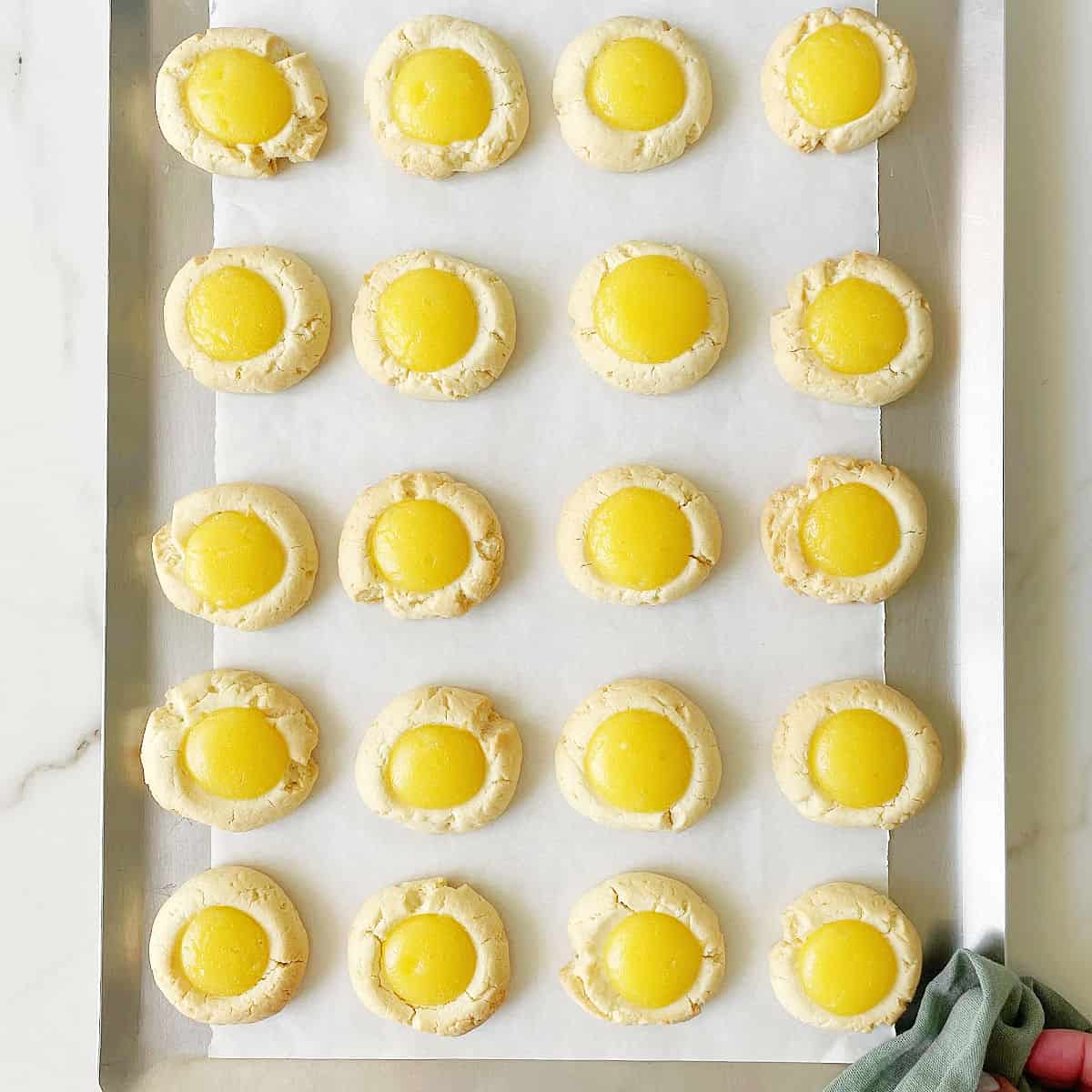
If you're a lemon lover, you can't help but love these lemon cookies.
Unless I want something with chocolate, these are among my favorite cookie recipes to make year-round.
Though many recipes use shortbread-type doughs (like we do for the Scandinavian jam tarts), we use a simpler one with a small amount of cornstarch that makes them soft and silky.
They're perfect for potlucks, barbecues, picnics, bake sales, or brightening up a dull day.
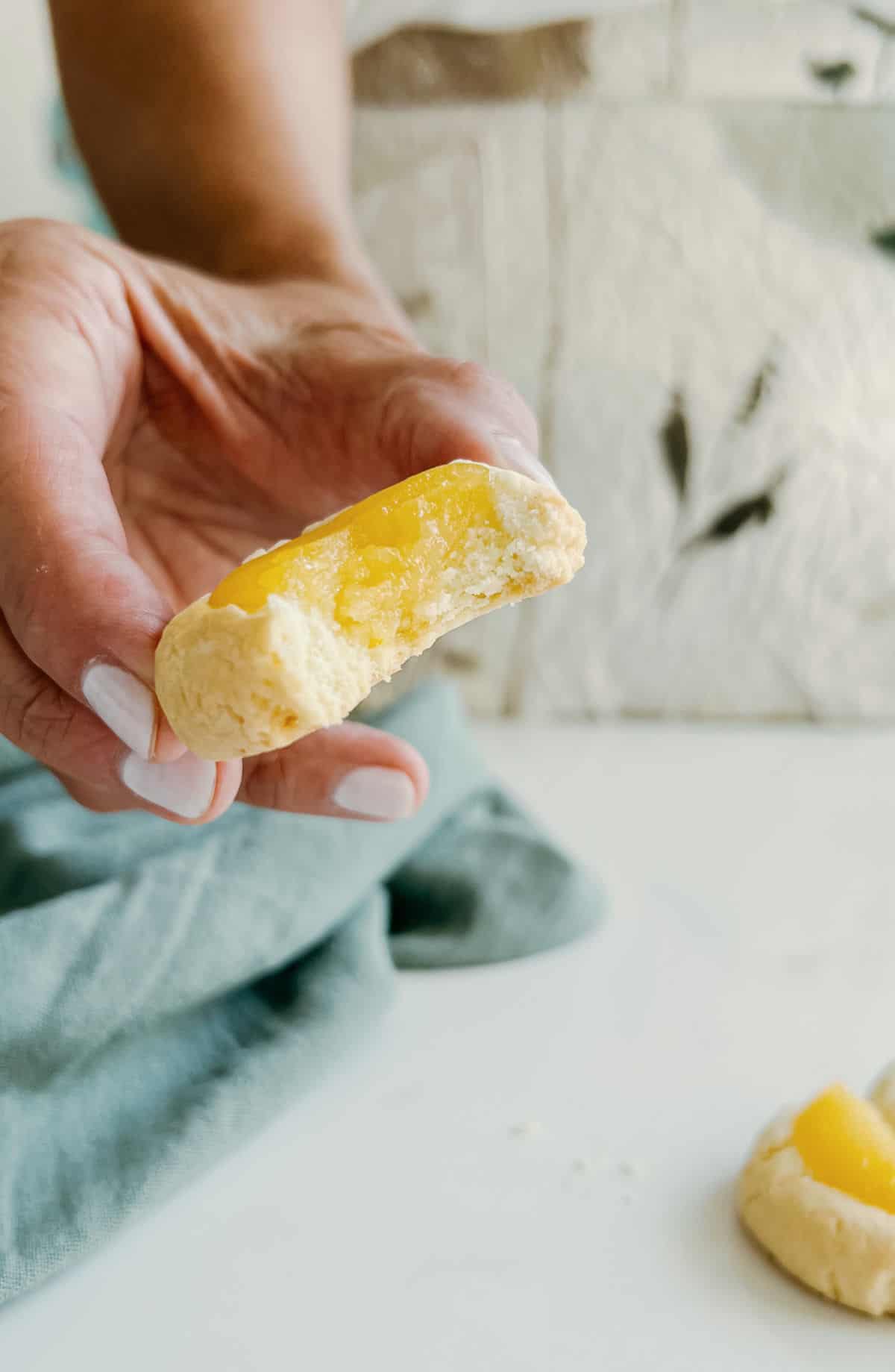
Ingredient Notes
Quantities are listed in the recipe card toward the end of this post. The Ingredients page has more details and lists the brands I use.
- Cornstarch: It helps with the softness and melt-in-your-mouth feel of the cookies.
- Powdered sugar: Also called confectioners ' sugar or icing sugar.
- Baking powder: Make sure it isn't expired.
- Lemon juice for the curd: Freshly squeezed is always superior to bottled.
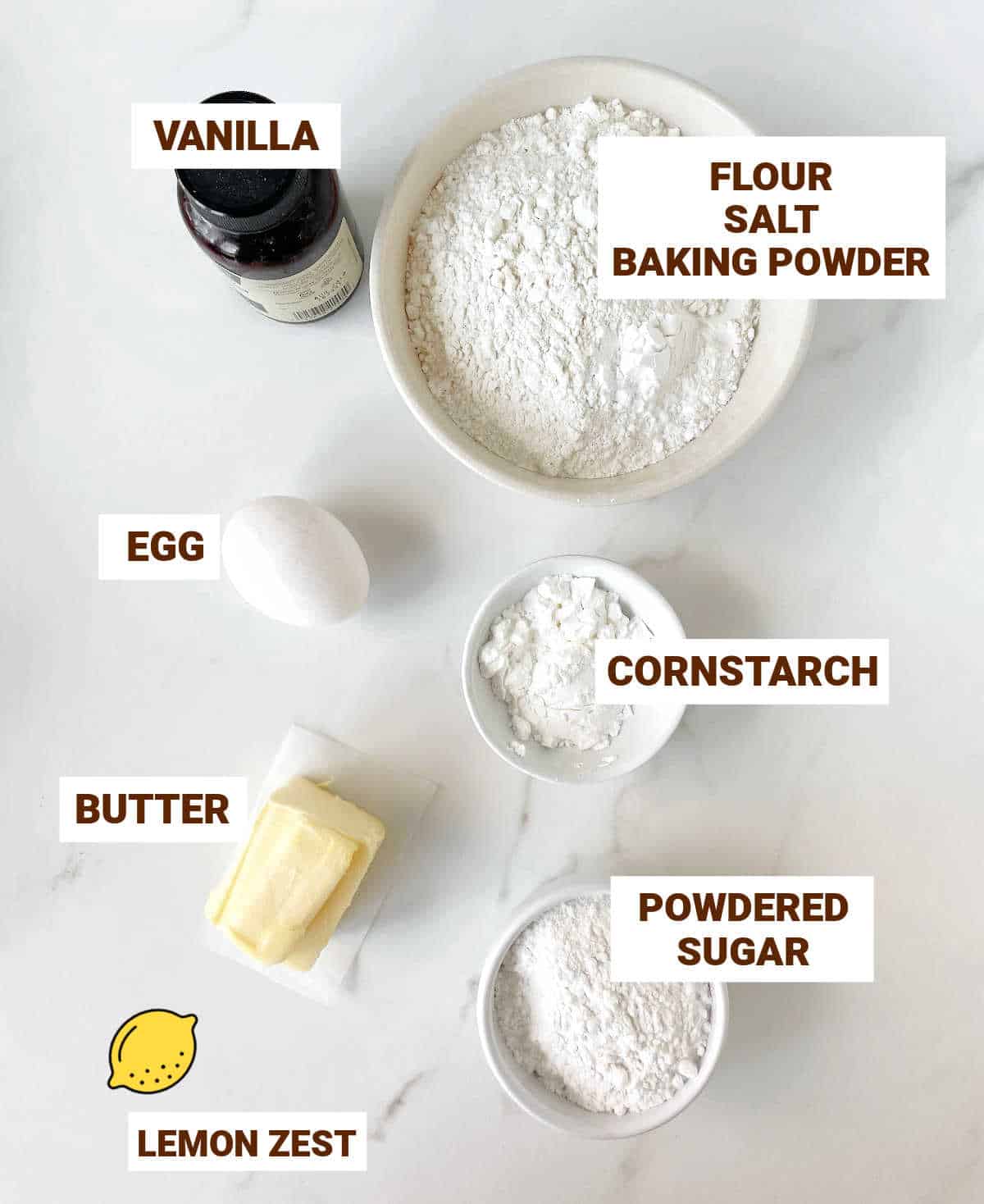
Lemon curd filling
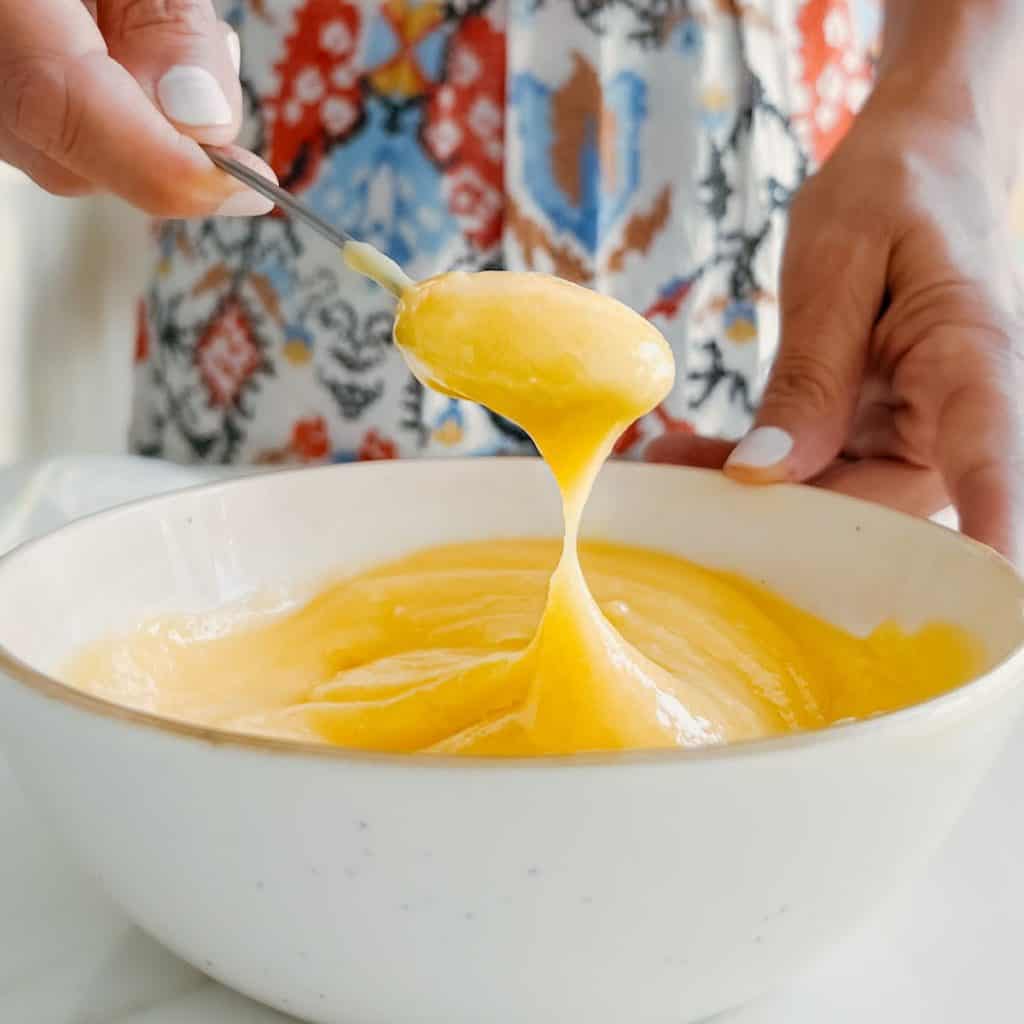
I recommend our homemade lemon curd recipe with perfect consistency, but you can use store-bought lemon curd.
- Mixing the dough: Use an electric mixer if it's convenient, but it's easily mixed by hand if the butter is at room temperature and soft (but not starting to melt). If making a large batch, a stand mixer might come in handy.
- Measuring the cookies: Use a cookie scoop so your cookies bake evenly. Leave roughly a 2-inch separation between each so they can spread comfortably during baking. I use the small cookie scoop of this set, which is 1.57 inches or 4 cm in diameter, for regular-sized cookies.
- When to add the filling: after several tries, I settled on baking the cookies on their own for ⅔ of the total time, filling them with lemon curd, and returning them to the oven to bake a little more. It's the way to avoid drying the curd and having underbaked cookies.
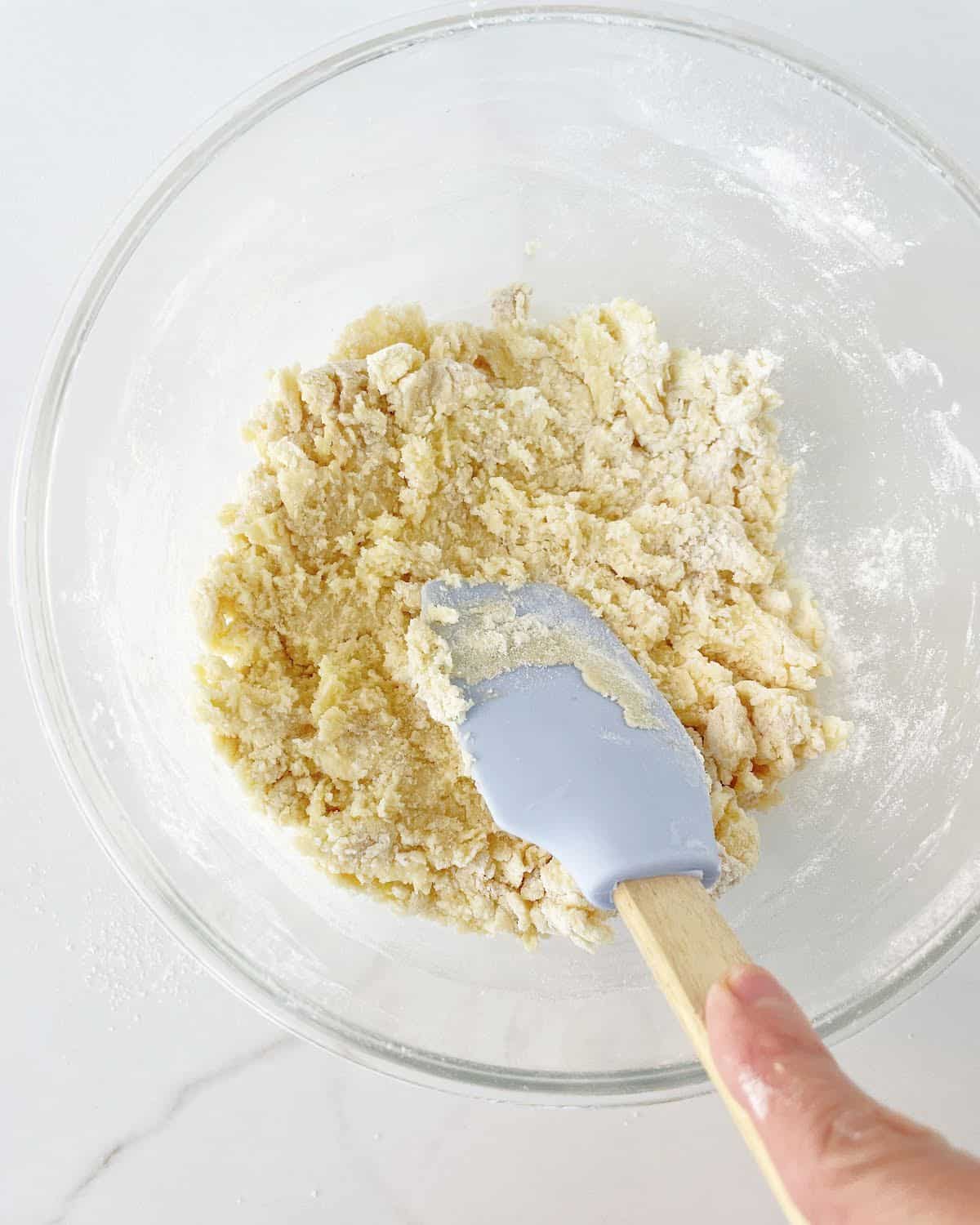
- If using an electric mixer, do so at the lowest speed after you add the flour. If mixing by hand, a rubber spatula is the easiest way to integrate the ingredients.
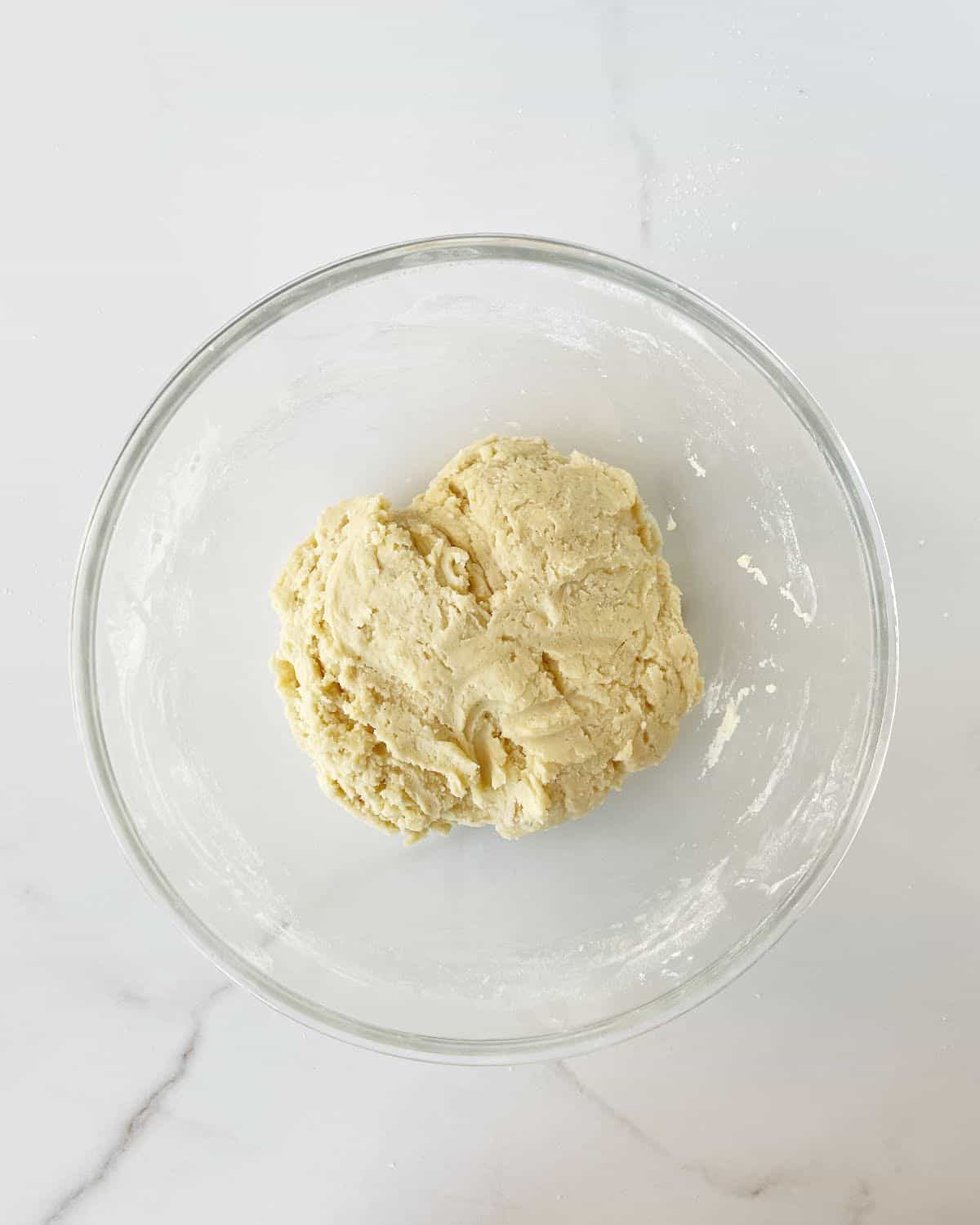
- You should have a smooth dough with no dry spots. You can use it immediately or chill it for a few days, always well covered to prevent dryness.
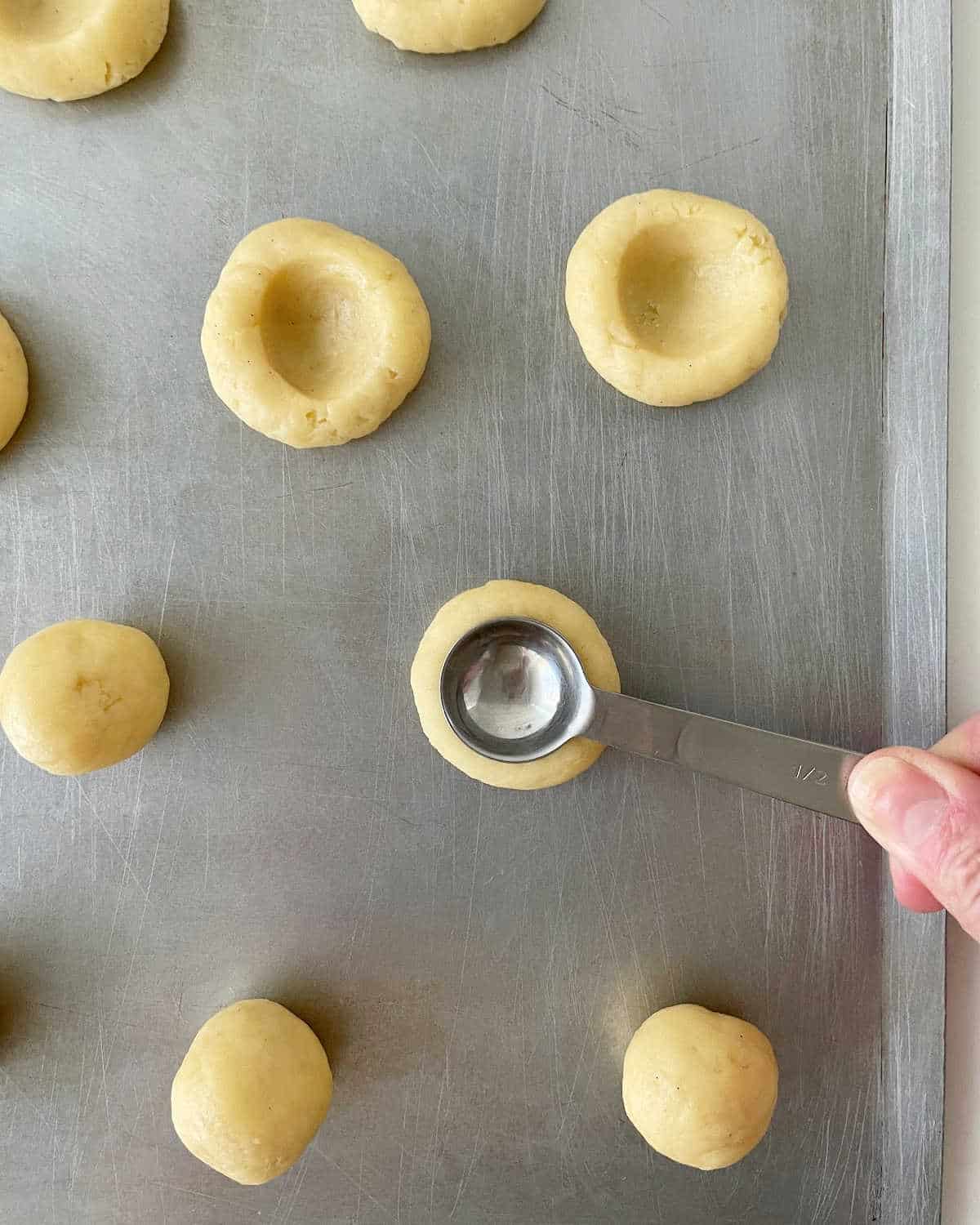
- Place the cookie dough balls with space between them to expand during baking and make an indentation in each one. The back of a small measuring spoon is the best way.
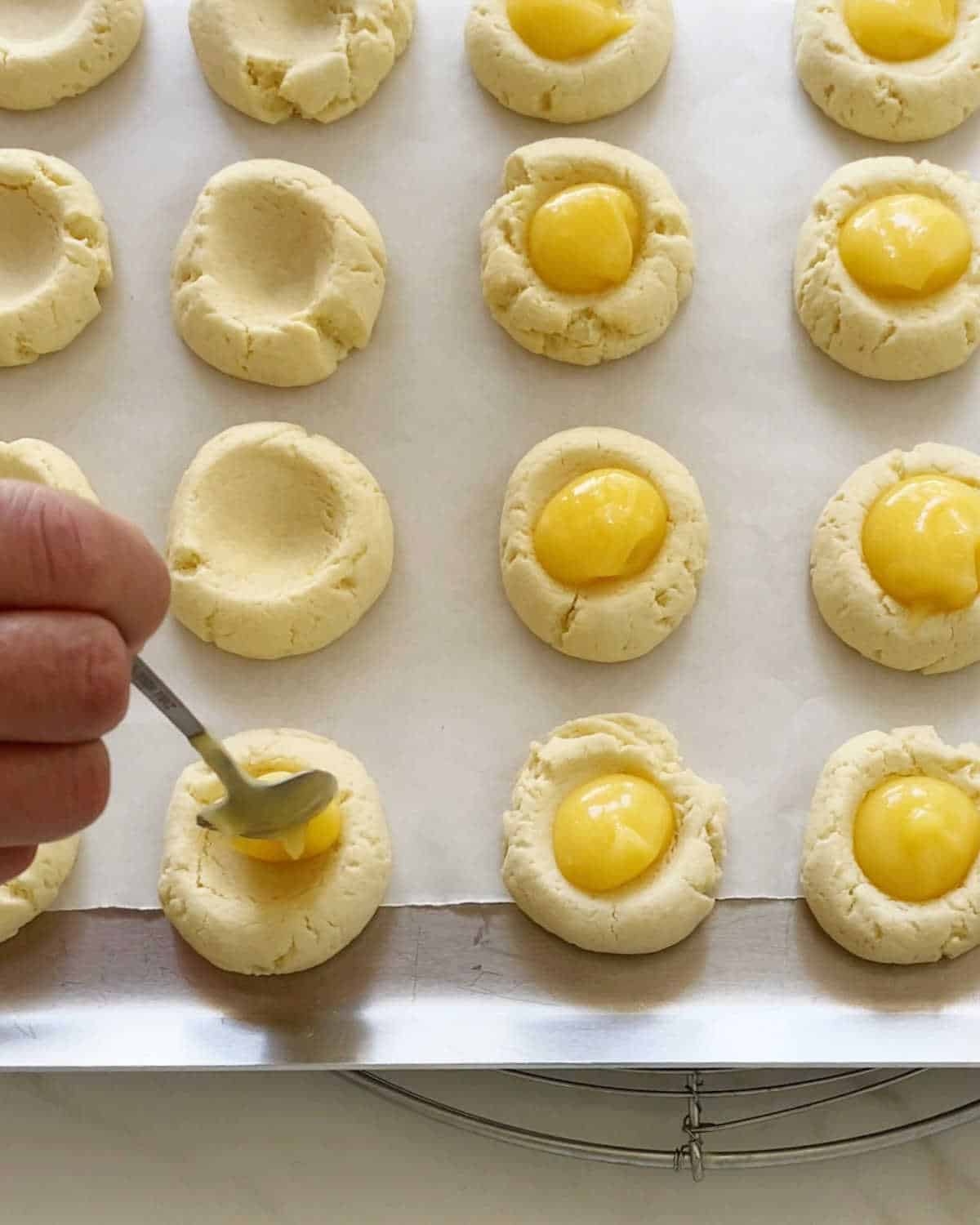
- Chill the dough balls before baking them. Don't fill the thumbprints to the brim to avoid spills in the oven, and do so halfway through baking.
Vintage Kitchen Tip
Do a test bake! I always recommend baking two or three cookies to find your sweet spot regarding baking time and texture. Check the time to ensure you don't over or underbake them. Also, see how much they expand (if at all) and adjust accordingly if needed so they don't touch during baking.
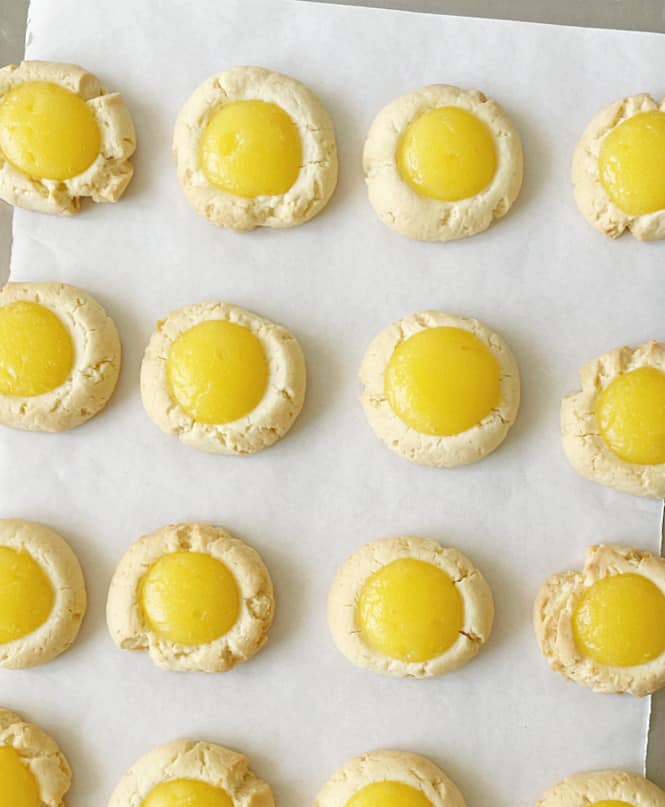
Kitchen notes
- Organization: Read the recipe first and ensure you have the ingredients at the correct temperature, the equipment, and enough workspace. This will make the process so much easier.
- Baking time: Keep in mind that all ovens and pans are different, even if they look the same or very similar. The baking time in my recipes is as accurate as it can be, but it might take you more or less time. You can use a thermometer (like the OXO oven thermometer) to check that your oven is at the right temperature. I recommend you tracking your oven works and what tiny details you need to adjust.
- Make ahead:
The lemon curd can be kept in the fridge for a week and up to a month in the freezer, always in airtight containers.
The cookie dough can be kept in the refrigerator for 3 days before using. Always cover it well to prevent dryness (I cover the bowl tightly with plastic wrap or transfer it to an airtight container with a lid). - Flavor variation: Use lemon jelly or passionfruit curd. Flavor the dough with a touch of ground cardamom in addition to the lemon zest; use lime zest for a lemon-lime cookie or a mix of citrus (orange, lemon, and lime).
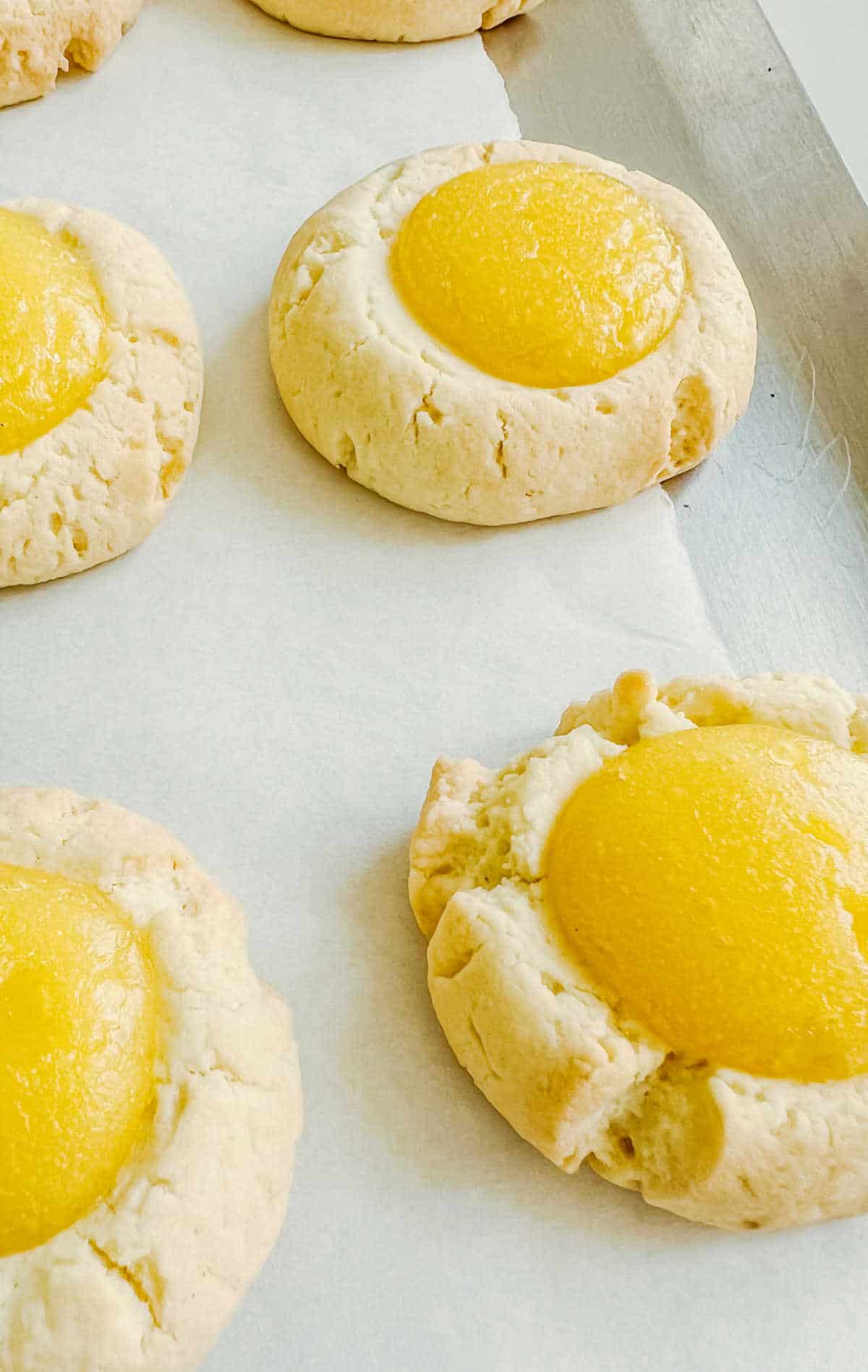
Troubleshooting common issues
Cookies spreading too much could be because your dough is too soft or warm or needs more flour. Make sure to chill the dough for at least 30 minutes before baking, and use a good thumbprint recipe like this one, and you won't have this issue.
Lemon curd leaks happen when the cookies have too much curd or the curd is too thin. Don't fill the indentation to the brim to avoid leakage. Use my homemade lemon curd that has the perfect consistency for these cookies.
The lemon curd sinking in the cookies could be because the cookies are not baked enough before adding the curd. That's why we half-bake them and then add the curd filling.
Storage
Allow them to cool completely at room temperature.
- Airtight container: store in a single layer, separating each one with wax paper to prevent sticking. I like to use metal tins.
- Room temperature: they keep well for up to 3 days.
- Refrigerated: keep them in the fridge for up to 1 week well covered to prevent dryness.
- Frozen: wrap them tightly in plastic wrap and place them in an airtight container or freezer bag. They will keep for up to 2 months. Let them come to room temperature before serving.
Related recipes you might like:
Before you go
If you made this recipe and loved it, you can comment below and leave a five-star ⭐️ review. Also, if you had issues, let me know so we can troubleshoot together.
You can also subscribe to our FREE email series 'Baking the Best' and our regular newsletter. Or follow and save my recipes on Pinterest.
As an Amazon Associate, I earn from qualifying purchases. Read my disclosure policy.
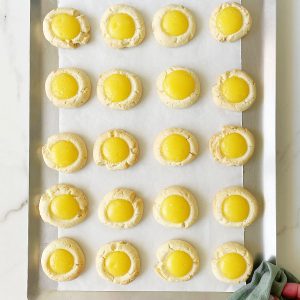
Lemon Curd Thumbprint Cookies
Ingredients
For the cookie dough:
- 6 ½ tablespoons unsalted butter, at room temperature
- ½ cup powdered sugar
- 1 egg, at room temperature
- 1 teaspoon vanilla extract
- 1 ⅔ cups all-purpose flour
- 2 tablespoons cornstarch
- ½ teaspoon baking powder
- ⅛ teaspoon salt
For the lemon curd:
- ½ cup fresh lemon juice
- 2 tablespoons unsalted butter
- 2 eggs, at room temperature
- 1 egg yolk, at room temperature
- ½ cup sugar
- large pinch of sea salt
- a few drops of vanilla extract
Instructions
For the cookie dough:
- Butter or use baking spray to grease cookie sheets or line them with parchment paper.
- In a large bowl, cream (with a hand mixer or wooden spoon) 6 ½ tablespoons unsalted butter and ½ cup powdered sugar until smooth.
- Add 1 egg and 1 teaspoon vanilla extract and beat until well combined.
- Add the sifted 1 ⅔ cups all-purpose flour, 2 tablespoons cornstarch, ½ teaspoon baking powder and ⅛ teaspoon salt. Mix everything well. It will be a smooth and tender dough. You can sift them before in a separate bowl or have the ingredients measured and sift them directly over the butter mixture when prompted (my choice).
- Take teaspoons of dough and form balls no more than 1 inch wide, the size of walnuts. Don't make large balls, as they will take too long to bake, and the filling will end up being too dry and probably spill.
- Place them on the prepared baking sheets with space between them.
- Make an indentation in each piece of dough. The hole should not reach the bottom and break the dough. Tip: I use the bottom part of a small measuring spoon (½ teaspoon size).
- Put the whole baking sheet in the fridge for 30 minutes. This chills the dough so it doesn't spread or change its shape too much when it bakes.
- Preheat the oven to 350°F (180°C).
- Bake for about 7-8 minutes, until dry. Remove from the oven and fill with the lemon curd. If you feel the hole puffed up too much in the oven, lightly press it again with the back of the measuring spoon. Do this quickly, as the cookies need to bake some more.
- Bake for 4-5 more minutes, until they start to lightly brown and the curd is firmer. They might take more or less depending on your oven and the size of your cookies.
- Cool on a wire rack before eating.
For the lemon curd:
- Heat ½ cup fresh lemon juice and 2 tablespoons unsalted butter in a medium, heavy saucepan and remove just below the boiling point.
- Whisk 2 eggs, 1 egg yolk and ½ cup sugar to blend in a large bowl.
- Gradually add the hot lemon mixture to the eggs, mixing well and quickly. Don't add it all at once, as you can curdle parts of the eggs.
- Transfer the mixture back to the saucepan and stir constantly over medium-low heat until it thickens and leaves a path in the back of the spoon that stays put for a few seconds. Be careful not to burn the bottom.
- Remove from the heat, add a large pinch of sea salt and a few drops of vanilla extract. Cover with a piece of plastic wrap or a freezer sheet that touches the whole surface to prevent a thick layer from forming. Let it cool.
- Refrigerate in a jar or container with a lid for a week. Or freeze in an airtight container for up to a month.
Notes
The lemon curd keeps for a week in the fridge and up to a month in the freezer, always in airtight containers.
The cookie dough can be kept in the refrigerator for 3 days before using. Always cover it well to prevent dryness. Test bake: I always recommend doing a test run with a few cookies to check the amount of curd to use and the time they take to bake so they are soft and not spilled. Mixing the dough: use an electric mixer if it's convenient, but it's easily mixed by hand if the butter is at room temperature and soft (but not starting to melt). If making a large batch, a stand mixer might come in handy. Measuring the cookies: use a cookie scoop so your cookies bake evenly. Leave roughly a 2-inch separation between each, so they can spread comfortably during baking. I use the small cookie scoop that it’s 1.57 inches / 4cm in diameter for regular-sized cookies. When to add the filling: after several tries, I settled on baking the cookies on their own for ⅔ of the total time, filling them with lemon curd, and returning them to the oven to bake a little more. It's the way to avoid drying the curd and having underbaked cookies.


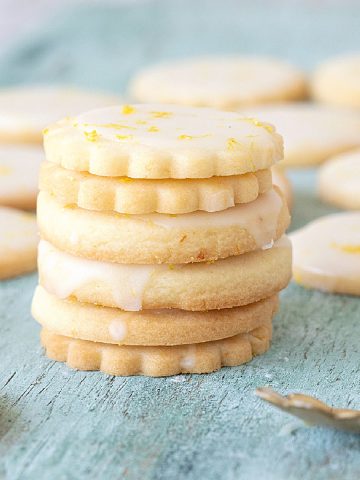

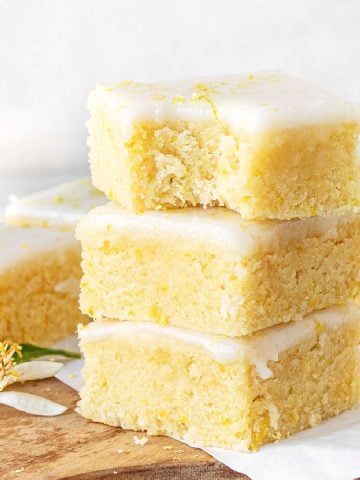

Margherita says
Hi,why in the ingredients for the cake, the butter in grams remains unchanged even though I changed it to "ingredients x3"? I don't know how much butter there should be in grams, I should add that I don't know American measurements, only European ones, I'm writing from Italy. Please reply. Best regards. M
Paula Montenegro says
Hi Margherita, it should work now. You can also toggle the metric button and get the ingredients in grams.